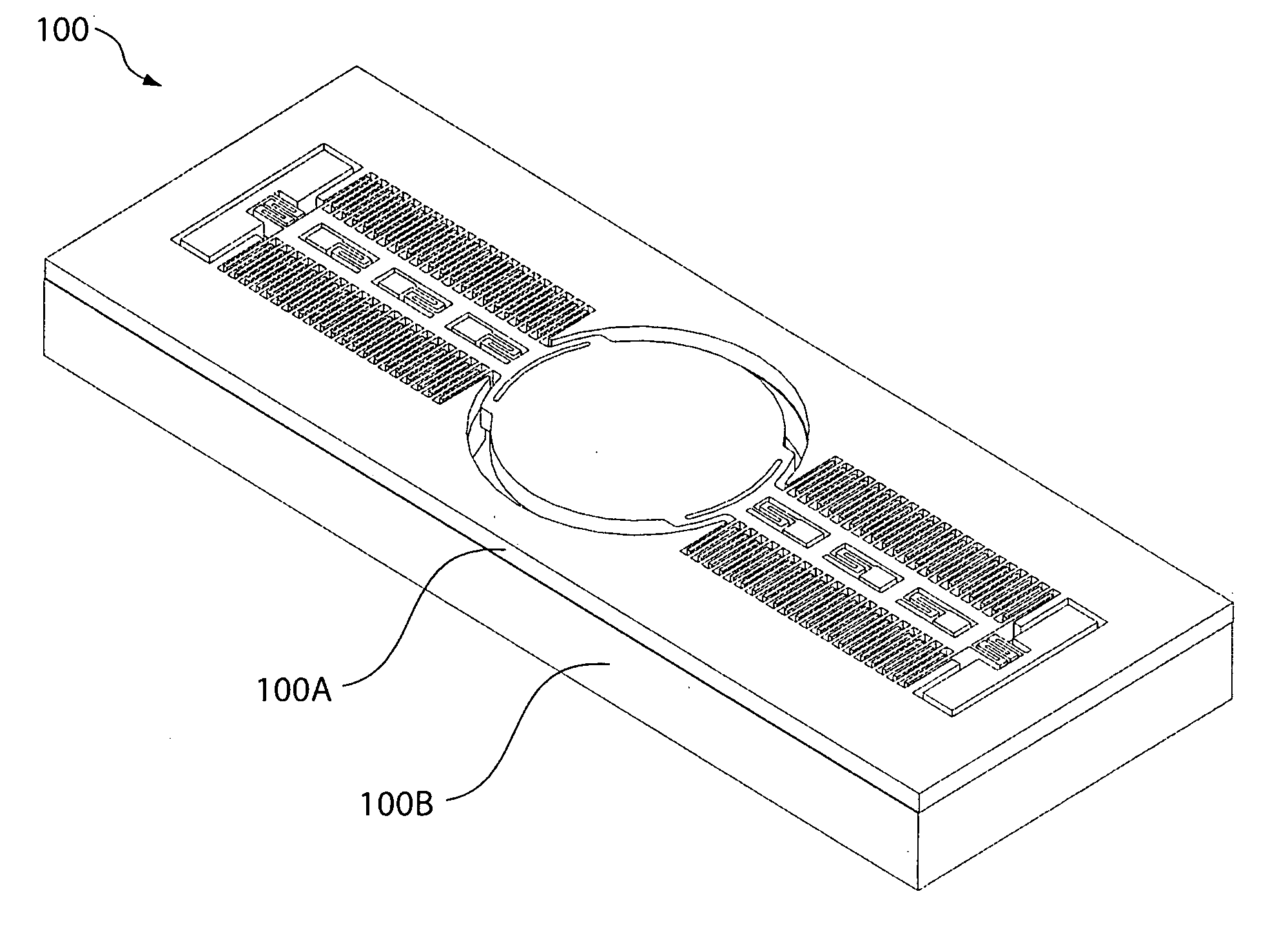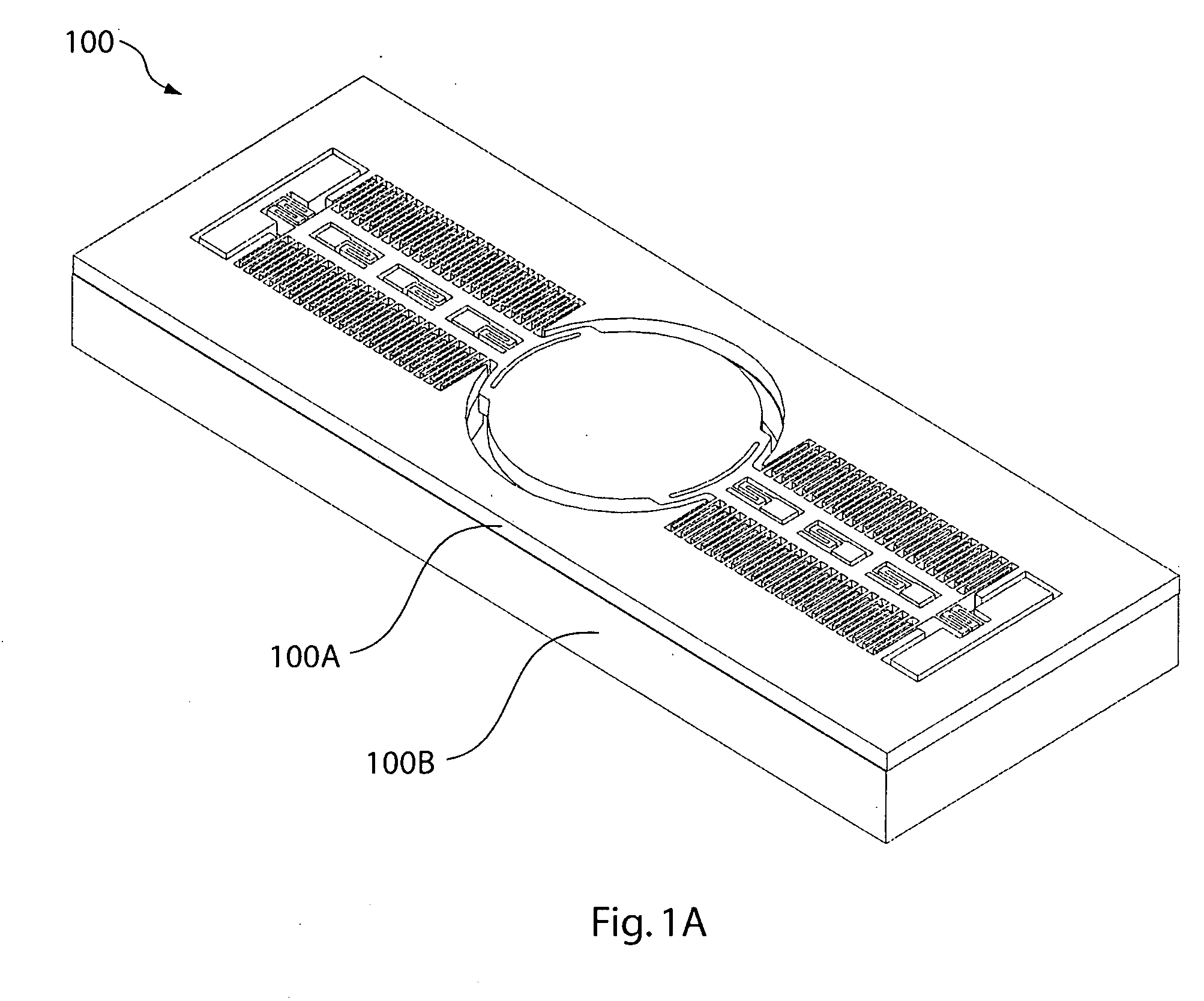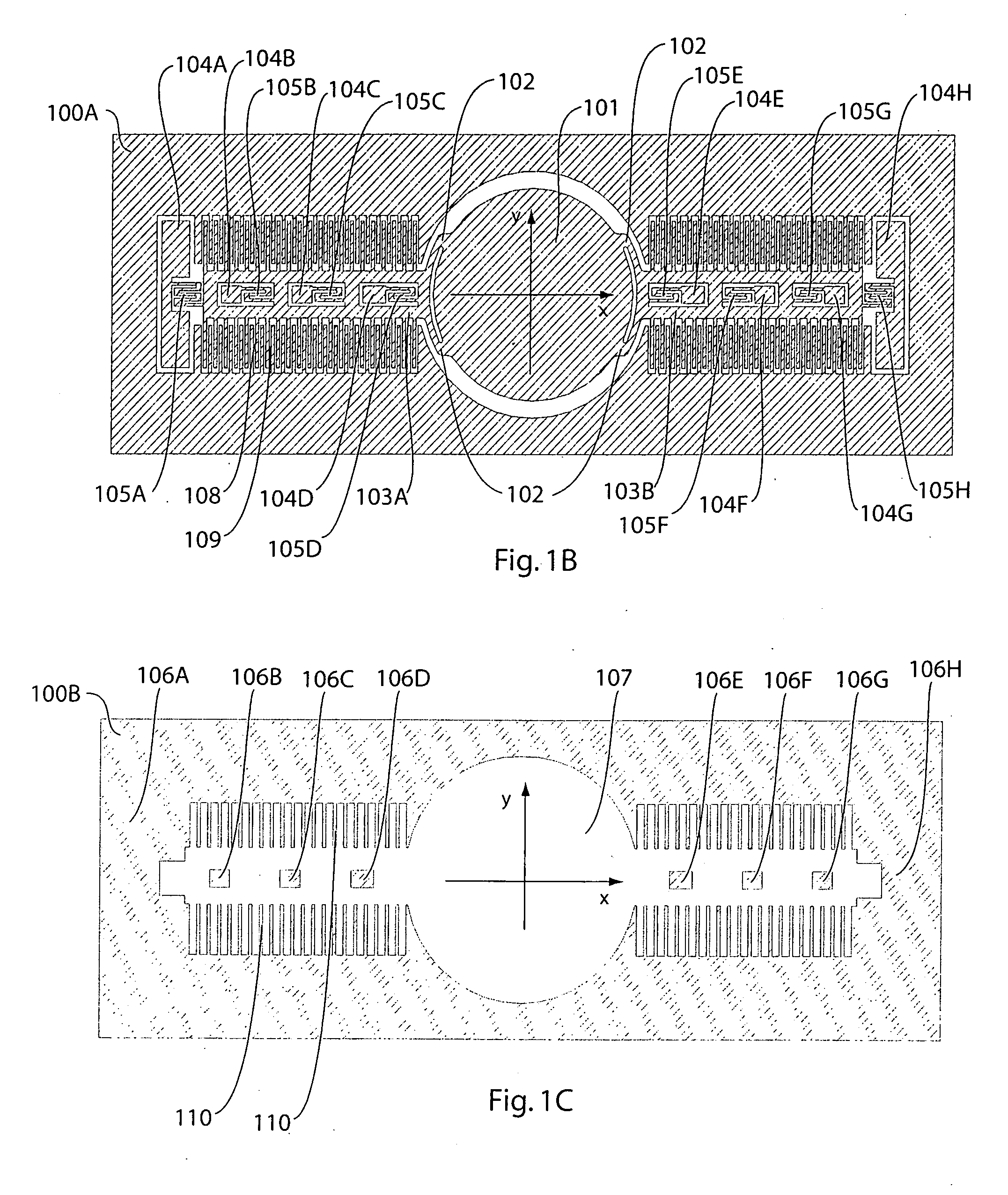MEMS scanning mirror with trenched surface and tapered comb teeth for reducing inertia and deformation
- Summary
- Abstract
- Description
- Claims
- Application Information
AI Technical Summary
Benefits of technology
Problems solved by technology
Method used
Image
Examples
Embodiment Construction
[0015]FIG. 1A illustrates a MEMS scanning mirror device 100 in one embodiment of the invention. Device 100 includes a top layer 100A (FIG. 1B) and a bottom layer 100B (FIG. 1C).
[0016] Referring to FIG. 1B, top layer 100A includes rotational comb teeth 108 that are connected on opposing sides of beam-like structures 103A and 103B. Proximate ends of beams 103A and 103B are connected by multiple support attachments 102 to opposing sides of a scanning mirror 101. In other words, each beam is connected at multiple locations to scanning mirror 101. The positions and the number of support attachments 102 can be refined through finite element analysis to improve the vibration stability and to minimize dynamic deformation of scanning mirror 101. By improving the vibration stability and reducing dynamic deformation of scanning mirror 101 with support attachments 102, the optical resolution of device 100 is improved.
[0017] Beams 103A and 103B are attached by eight serpentine springs / hinges 1...
PUM
 Login to View More
Login to View More Abstract
Description
Claims
Application Information
 Login to View More
Login to View More - R&D
- Intellectual Property
- Life Sciences
- Materials
- Tech Scout
- Unparalleled Data Quality
- Higher Quality Content
- 60% Fewer Hallucinations
Browse by: Latest US Patents, China's latest patents, Technical Efficacy Thesaurus, Application Domain, Technology Topic, Popular Technical Reports.
© 2025 PatSnap. All rights reserved.Legal|Privacy policy|Modern Slavery Act Transparency Statement|Sitemap|About US| Contact US: help@patsnap.com



